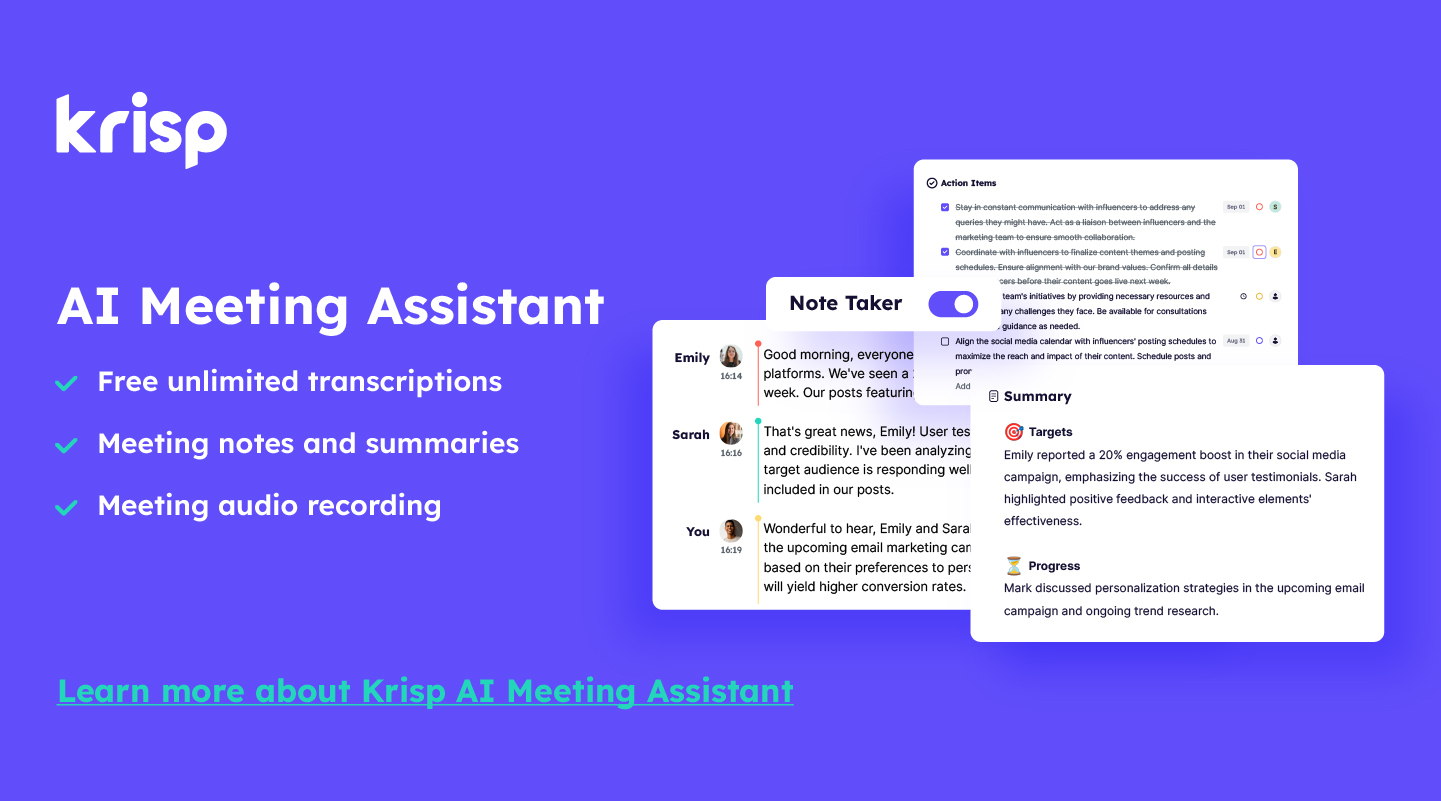Imagine you’re in a team meeting where everyone has different opinions on an important decision. Some people want one thing, others strongly disagree, and the discussion starts feeling more like a debate than a productive conversation. How do you bring everyone together and reach an agreement that feels fair and beneficial to all? This is where consensus building comes in.
Consensus building isn’t just about making decisions—it’s about making sure that every voice is heard, conflicts are resolved respectfully, and the final decision is something the whole group can support. Instead of one person forcing a choice or a majority overruling the rest, consensus building helps teams, organizations, and even entire communities work together in a way that fosters trust, collaboration, and long-term success.
In this article, we’ll explore what consensus building really means and the best ways to approach it. So, understanding how to build consensus can help create smoother, more effective discussions and better outcomes for everyone involved.
What Is Consensus Building?
Consensus building is a collaborative decision-making process that focuses on finding a solution that satisfies the interests of all stakeholders involved. Unlike traditional voting systems, where decisions are made by a simple majority, consensus building prioritizes open discussion, compromise, and mutual understanding to reach an agreement that everyone can support.
This approach ensures that no one feels like a “winner” or “loser” in the decision-making process. Instead of pushing through a choice that only benefits the majority, consensus building encourages participants to work together, explore different perspectives, and develop solutions that maximize benefits for everyone. As a result, agreements reached through consensus tend to be more stable, effective, and widely accepted.
While majority rule—popularized by Robert’s Rules of Order in 1876—has long been the standard for group decision-making, it can sometimes lead to division. When individuals feel forced into a decision they don’t fully support, conflicts may arise, and cooperation may weaken over time. In contrast, consensus building fosters trust, strengthens relationships, and leads to decisions that are not only fair but also more sustainable in the long run.
Why is Consensus Building Important?
The Program on Negotiation at Harvard Law School highlights that consensus-building techniques help groups make better, longer-lasting decisions compared to a simple majority vote. Instead of forcing a quick yes-or-no decision, consensus building encourages open discussion, collaboration, and problem-solving so that everyone’s concerns are addressed.
This approach builds trust, reduces conflicts, and ensures that more people fully support the final decision. When groups rely on majority rule, those in the minority may feel left out or resist the outcome. But with consensus, people work together to find creative solutions that benefit everyone, making agreements stronger and more effective.
By prioritizing consensus, teams and organizations can make smarter, fairer, and more stable decisions that everyone feels invested in.
What are the Best Approaches for Consensus Building?
Building consensus within a group requires thoughtful strategies that ensure everyone’s voice is heard and respected. Instead of relying on majority rule, these techniques help guide discussions toward collaborative and sustainable decisions. Below are some of the most effective approaches to consensus building:
1. Conventional Problem-Solving Approach
This method starts by identifying the interests and concerns of all stakeholders. Instead of focusing on fixed positions, participants work together to generate proposals that address everyone’s needs. If disagreements arise, the group engages in an open discussion to find modifications or alternative solutions that make the proposal acceptable to all parties. By encouraging active listening, compromise, and creative problem-solving, this approach leads to fair and well-balanced agreements that everyone can support.
2. Single-Text Document Method
In this approach, a neutral facilitator, technical expert, or a subgroup of stakeholders prepares a draft agreement early in the discussion. Rather than debating multiple conflicting proposals, the group works together to review, modify, and refine a single document until all participants feel comfortable with the final version. This method helps structure discussions by keeping the focus on a shared document, ensuring clarity and reducing misunderstandings. The iterative nature of this approach fosters cooperation and gradual consensus-building.
3. Visioning Approach
Sometimes, disagreements arise because people are too focused on immediate concerns rather than the bigger picture. The visioning approach shifts the discussion towards long-term goals by asking guiding questions like:
- What do we have now?
- What do we want in the future?
- How do we get there?
By encouraging participants to imagine a desirable future outcome, this technique helps move past conflicts and focus on shared aspirations. It is particularly useful for strategic planning and community-based decision-making, where groups need to align around a common vision.
4. Brainstorming
Brainstorming is an essential tool in consensus building because it allows everyone to contribute ideas freely without immediate judgment. In this process, participants are encouraged to think creatively and suggest as many ideas as possible, even if they seem unconventional.
Once all ideas are on the table, the group can discuss and refine them to identify practical solutions that address everyone’s concerns. Brainstorming helps generate a wide range of options, making it easier to find solutions that satisfy all parties.
5. Multi-Voting
When a group needs to narrow down multiple options, multi-voting is a useful technique. Each participant is given a set number of votes to distribute among their preferred options. Instead of making a single choice, individuals can spread their votes across multiple ideas they support. This approach highlights the most favored solutions while ensuring that minority opinions still have influence in the final decision. Multi-voting simplifies complex discussions and ensures a fair prioritization of ideas without completely disregarding less popular perspectives.
6. Nominal Group Technique
Some individuals may hesitate to share their thoughts in open discussions, especially in larger groups or when dominant voices take over the conversation. The nominal group technique addresses this issue by combining independent idea generation with structured group discussion. Each participant first writes down their ideas privately, ensuring that everyone has an equal chance to contribute. The ideas are then presented, discussed, and ranked collectively. This technique reduces bias, prevents groupthink, and leads to more balanced decision-making.
7. Dot Voting
A simple but effective way to visually assess group preferences is dot voting. Participants receive a set number of stickers or “dots” to place next to their preferred options from a list of possibilities. This method provides a quick snapshot of which ideas have the most support, allowing the group to prioritize the most promising solutions efficiently. Since dot voting is transparent and easy to understand, it works well in both informal and structured decision-making settings.
8. Fist-to-Five Consensus
Instead of a simple yes/no vote, the fist-to-five method allows participants to express the degree of their agreement with a proposal using their fingers:
- A fist (zero fingers) means complete disagreement.
- One or two fingers indicate major concerns.
- Three fingers suggest neutral support but some reservations.
- Four fingers indicate strong agreement.
- Five fingers mean full endorsement.
This method visually captures varying levels of support and helps facilitators identify where additional discussion is needed. If many people show one or two fingers, the group can pause to address concerns and refine the proposal, ensuring that the final decision is widely accepted rather than forced through majority rule.
Consensus building is not about making every participant completely happy, but rather about finding solutions that all stakeholders can support and feel invested in. By using techniques such as structured discussions, voting methods, brainstorming, and collaborative visioning, groups can make better, more sustainable decisions. These approaches ensure that the final outcome is not only effective but also strengthens relationships and trust among participants.
6 Tips to Improve Consensus Building
Consensus building works best when discussions are open, respectful, and structured to encourage collaboration. To make the process smoother and more effective, here are three key strategies to follow:
1. Understand Stakeholders’ Perspectives
One of the biggest challenges in reaching a consensus is ensuring that every stakeholder feels heard and valued. Before jumping into decision-making, take the time to actively listen to each person’s concerns, priorities, and expectations. This means encouraging open conversations, asking clarifying questions, and acknowledging differing viewpoints rather than dismissing them. When people see that their perspectives matter, they are more likely to stay engaged and work towards a mutually beneficial solution rather than pushing their own agenda.
2. Use AI-Powered Note-Taking to Keep Everyone on the Same Page
One of the biggest obstacles to consensus building is miscommunication or forgetting key points from discussions. With Krisp’s AI-powered note-taking, you can automatically capture meeting insights, including key arguments, agreements, and unresolved issues. This ensures that all stakeholders have access to accurate, structured notes, reducing misunderstandings and the need for repeated discussions.
After the meeting, share the AI-generated notes with participants so they can review what was discussed and confirm alignment before finalizing a decision.
3. Establish Clear Objectives and Shared Goals
A group cannot build consensus if everyone has a different vision of what they are trying to achieve. Before starting discussions, clearly define the goal of the decision-making process and ensure that all participants agree on the desired outcome. Having a shared goal helps keep the conversation focused and prevents unnecessary conflicts over details that may not be relevant. When people understand that they are working towards a common purpose, they become more willing to compromise and find solutions that benefit the entire group.
4. Identify and Track Key Action Items
Consensus building isn’t just about reaching an agreement—it’s about ensuring that agreed-upon decisions turn into real action. Krisp’s Key Action Detection feature helps teams track assigned tasks and next steps, ensuring that responsibilities are clear and deadlines are met. This prevents important follow-ups from being forgotten and keeps everyone accountable.
At the end of the meeting, review Krisp’s action item summary to confirm that each person understands their next steps, making it easier to move forward as a team.
5. Encourage Open Dialogue in a Respectful Environment
Creating a safe and respectful space for discussions is essential to consensus building. People need to feel comfortable expressing their thoughts without fear of criticism or dismissal. Establishing ground rules—such as allowing everyone a chance to speak, avoiding interruptions, and addressing disagreements constructively—ensures that discussions remain productive. Encouraging a culture of respect and inclusivity not only makes decision-making smoother and more cooperative but also strengthens trust among group members, leading to more sustainable agreements.
6. Improve Engagement by Reducing Meeting Fatigue
Long and unfocused discussions can make it harder to reach a decision. Krisp’s AI Meeting Summary helps keep discussions concise by highlighting the most important points in real time. This allows participants to stay engaged without getting overwhelmed by excessive details.
Instead of rewatching entire meetings, encourage your team to use Krisp’s summary feature to quickly refresh key decisions before the next discussion.
With Krisp AI Meeting Assistant, your team can stay focused and make decisions faster, turning every discussion into clear, actionable insights without wasting time on long, unfocused meetings
FAQ
2. Fist-to-Five Consensus – Participants show their level of agreement using their fingers (a fist means complete disagreement, five fingers mean full agreement), allowing for quick feedback and discussion on concerns.
3. Brainstorming & Multi-Voting – Encouraging open idea-sharing followed by prioritizing the most viable options through a structured voting system helps refine decisions collaboratively.





